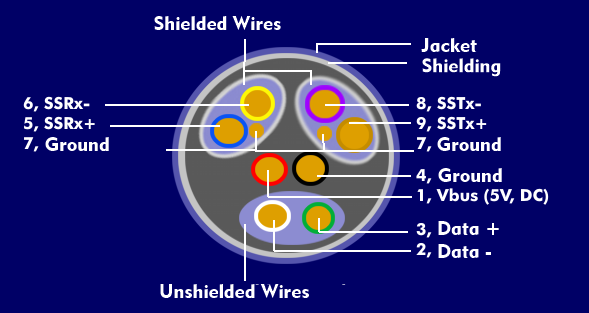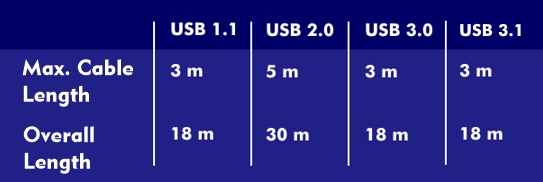USB cable
The development of USB versions has a direct influence on the USB cable. With USB 1.0 it was an unshielded or shielded copper cable with four cores, with USB 3.0 it is a high-tech cable with high electromagnetic compatibility and low attenuation.
The classic USB cable has four cores twisted into two pairs. One pair of wires, with a red and black core, supplies the power, while the second, with a white and green core, transmits the data. The difference between low-speed and high-speed is the shielding. The maximum cable length for USB cables is 5 meters.
The cable for USB 3.0 differs from the classic USB cable in that, in addition to the four wires already mentioned, it has two additional differential wire pairs and another ground connection for shielding. It therefore has a total of nine cores. The classic twisted pair (green/white) for data transmission is unshielded, the other two shielded and twisted pairs are differential signals for unidirectional data transmission for SuperSpeed Transmitter (SSTx) and SuperSpeed Receiver (SSRx). While the SSTx line transmits from the host to the peripheral, the SSRx line transmits from the peripheral to the host.
All shielded and unshielded cores and core pairs are surrounded by an overall shield in the USB 3.0 cable.


